-
-
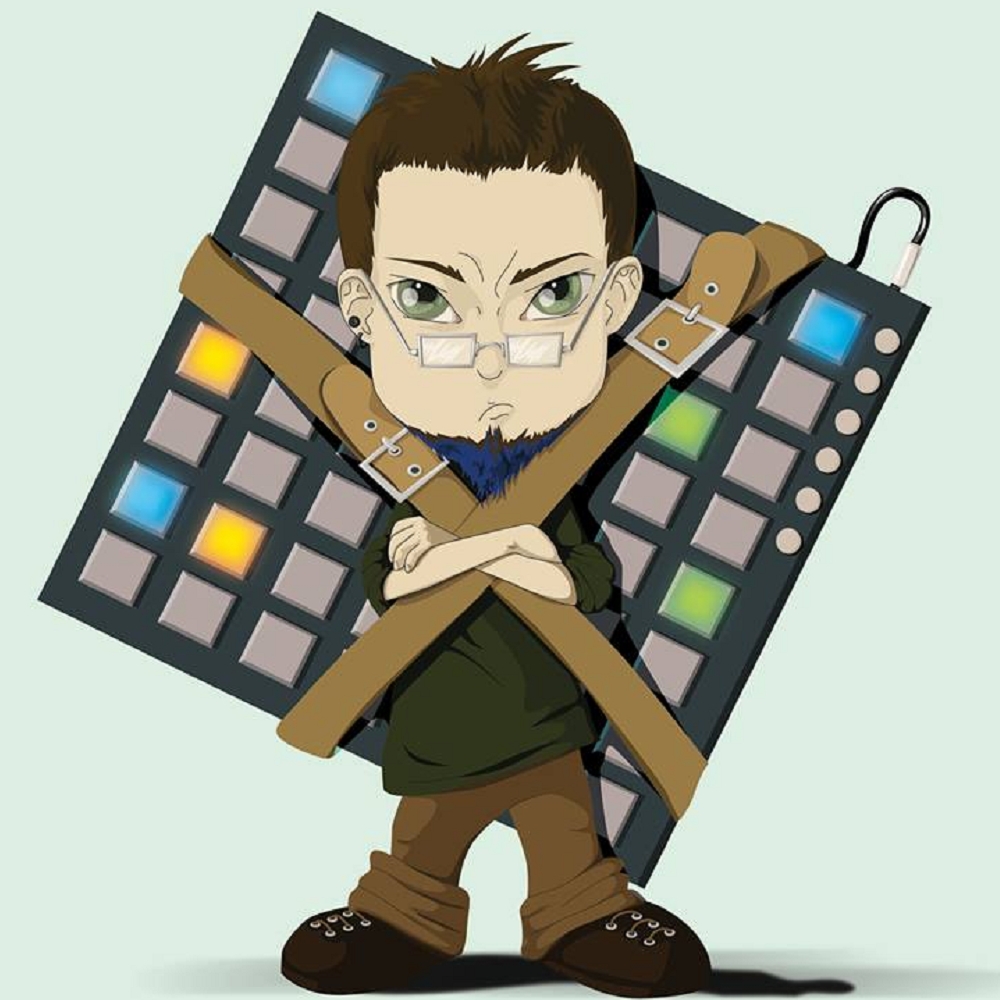
-
Bandesnaci
- 18 June, 2013 in People & Adventures
Controllerist Interview: Mark Mosher

Mark Mosher performing live. All photos courtesy of the artist
Usually, our controllerist features revolve around asking each artist we plan on talking about a few questions and then writing an article about them based on their answers, with occasional quotes, pictures and videos. When I approached Mark Mosher, however, the answers he sent back contained not only more than I could possibly dig up, but also a ton of links, pictures and content that I couldn’t possibly rework into something better. The fact that Mark’s basically done my job for me here demonstrates the level of commitment he has for everything he does. Â Check him out:
What got you into making music?
I was surrounded by music growing up. My dad played guitar and uke and also sang. One of my first memories is playing an old yellow upright piano we had in our basement. I switched to organ somewhere along the way which is one of the reasons I became interested in synthesis. Being able to shape the sound of the organ with drawbars sent me down the path of sound design. Even as a kid I spent a lot of time experimenting with music and sound and composition. My first synth was a Korg Poly 800. I then picked up a MicroMoog. After this I got heavily into Ensoniq ESQ-1 – which kind of changed my life, really.Where was your first gig?
When I was in college I became obsessed with early synth bands – you know, DEVO, Gary Numan, Depeche Mode, Human League, OMD, and Kraftwerk. I taught myself to sequence and program drum machines and spent a lot of time programming synths to match the sounds in those songs. I also went to see a lot of live shows and met a lot of people playing in bands.
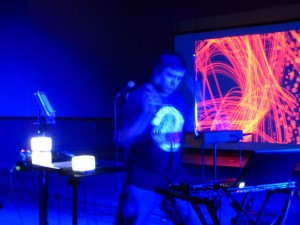
I eventually joined a band called the Head Full of Zombies on synth. As time went on I also became one of the singers and sang lead on about half the songs. I really learned a lot about performance by playing 100s of shows over a 13 year period with HFOZ in Colorado Springs in the club circuit. All that gigging experience prepared me for playing my current one-man controllerism show.
Fast forward to 2009. I spent about 6 months researching and building up a controllerism rig I could fly with based on Ableton Live using only virtual instruments. Controller-wise I used a Novation Remote SL 25, Tenori-On, AudioCubes, Theremin (as a controller), and a Launchpad. My first big show in this format was the Electro-Music Festival in NY in 2010 where I played songs from my original dark SciFi techno series.
Since then, I’ve had the good fortune to play around the country at events like Mountain-Skies in Asheville, NC; Art Institute of Sunnyvalle; and the Pacific Northwest Synthfest in Seattle.
Tell me about Modulate This! . Why did you start it? What keeps it going? Also, any plans for the future?
I started the blog Modulate This! way back in 2005 if you can believe it! At the time blogging was a fairly new way of publishing and there were very few people writing about synthesizers and artists. The blog was a way for me to share notes on my work, give back to the synth community, report industry news, and meet fellow artists. As time went on I backed away from being an industry news blog since blogs like Synthtopia, Create Digital Music, Matrixsynth, SonicState, SoundsandGear.com and Rekkerd.org have this territory more than covered. So in the last few years, I’ve migrated back towards a classic “journal blog†where I share my notes on various projects and help promote the work of fellow artists. I also share insights on my favorite instruments and devices.
You’ve had an interesting partnership with Bert Schiettecatte’s Percussa, and are the most prominent user of the AudioCubes that I know of. Tell me about how you managed to strike that connection and how it developed over time.
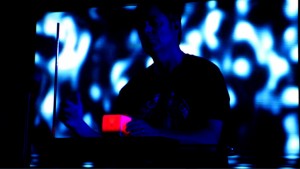
Photo Credit Jeremy DePrisc, Visuals by Michael O’Bannon.
We got to know each other slowly over time. Back in 2009 we first met through email when I was researching my controllerism rig. I really wanted to add spatial IR control to my show, and the AudioCubes not only allow for that, but are also smart and capable of sensing each other’s location and orientation. They can also emit full color light with via either proximity detection or through MIDI CCs so they also became important for visual feedback for the audience.
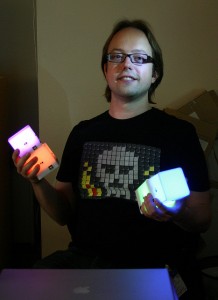
Bert has been very supportive and has incorporated a ton of suggestions (and new features) since 2009 and the cubes are still an important part of my show in 2013. For example, for my 2013 show they are also light sources for my live camera input for Resolume. I’m also using light to modulate synth parameters as well via the cube IR sensors. Bert continues to develop new apps for the AudioCubes such as Improvizor  which used heavily on my song “Primeval†on my last album NO GHOSTS. JUST FEAR. .
Tell me about the Boulder electronic music scene. You guys have the Boulder Synth meetup over there, and I’ve noticed you’ve been involved with these things for quite a long time.
I’ve been working with synths for 20 years and have been blogging about them on Modulate This for over 7 years so I thought it was just about time I started a face-to-face group and gathered the synth tribe around Boulder and the surrounding areas. I was also heavily involved with the Ableton Denver meetupwhich was great – but I wanted to do a meetup that wasn’t specific to any particular vendor. The Boulder Synthesizer Meetup is the end result.
Our first Meetupwas July 2012 and we already have over 90 members. Every meetup focuses on a different theme. Checkout this mindmap with a list of past and upcoming themes. We’ve even had guests fly in to present and have had some guest presenters via Skype. One of the best parts of the meetup is that it has been a real catalyst for kicking off collaborations for members.
You have a pretty unique sound and approach to production (the storyline and act-based structure you often employ). Tell me about how you developed this and why it suits you.
I’ve always been a huge fan of SciFi films and their soundtracks – especially the 50s classics like Forbidden Planet, and The Day the Earth Stood Still. From 2002-2004 I had the good fortune to do custom composition and sound design for a living and did work in commercials, and got a song in the extra features and CD soundtrack of the film One Six Right. I also was the sound designer for the big award winning regional theater company Theatreworks in Colorado Springs for most of a season. These experiences taught me the value of story as way to develop artistic ideas and then create emotional cues and curves that I could apply to my music.
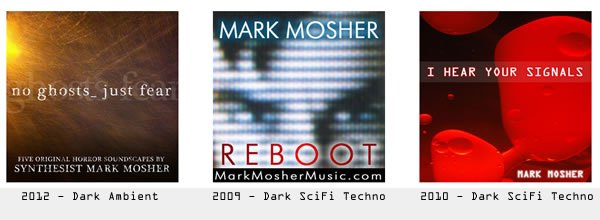
So when I went to release my first original album REBOOT, I decided I’d go in the direction of a story-driven concept album where each song would be the soundtrack to a SciFi movie yet to be filmed. If you listen to the track in album order, the story unfolds, and the titles of the songs give away the basic plot of each chapter – but I leave it up to the listener to fill in the story details. Each song was written to stand on its own as well.
REBOOT is an epic alien invasion story told from the human point of view. I HEAR YOUR SIGNALS is the same story told from the alien point of view – so the emotional curves are the opposite or REBOOT. The third album which I’ll release later this year picks up the story where these two albums left off. The album is called DORMANT and tells the tale of the internal struggles of a person who discovers they are a human-alien hybrid.
What’s your approach to live performance? How do your shows look like, and what gear do you use? Have your live performances setups varied greatly over the years or do they all basically have the same idea?
My goal was to perform my original music expressively with virtual synths and controllers and offer visual feedback to the audience so they can be entertained and connect my playing and movement to what is coming out of the speakers. I’ve also spent a lot of time coming up with a unified workflow with Live that allows simultaneously compose and arrange for Live performance so I don’t have to back and convert songs for live performance. This also allows me to gig songs in early forms so I can refine them through performance. My other goal was to create a rig where the core components would fit into 2 carry-ons.
I gigged for about 3 years with the same rig – Ableton Live on Windows, Remote SL 25 MKII, AudioCubes, Tenori-On, Theremin (pitch-to-MIDI), and Launchpad. Live hosts my racks of virtual synths and I play in session view mixing playback with live expressive controllerism. I pretty much only touch the computer to load sets – and never while I’m playing.
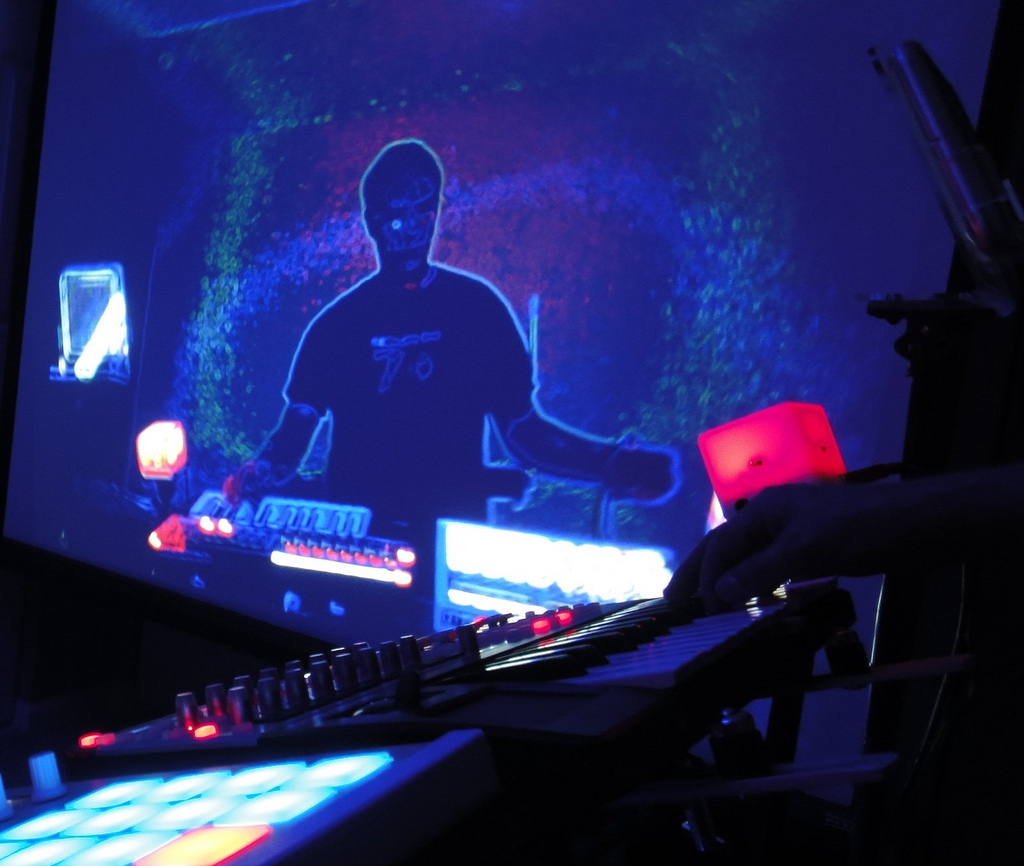
I refreshed my rigfor my 2013 show by replacing Launchpad with NI Maschine. I just love Maschine’s super expressive and very bright pads. I also added Maschine workflow as an option by using the Maschine VST within Live. I LOVE the Control Editor software and have created many custom templates I use with Live. I also use the Native Instruments Ableton Live Maschine template when I’m composing and performing.
The biggest change this year was the addition of a second laptop running Resolume for interactive visuals with live camera input. I control the visual laptop from the Ableton Laptop via MIDI. So I can route clip automation and controller modulation from my music rig over to Resolume. The Resolume rig also has copy of Ableton Live and all my virtual synths so I can swap out three cables and use this system as a fail-proof backup for my music rig.
I just debuted this new show at Pacific Northwest Synthfest in Seattle on March 16th and it worked really well. The new rig not only amplifies the show I’ve been polishing for years, but also allows me to bake story right into my show as I consider the projection to be my alter-ego – the personification of the “human-alien hybrid†that is the focus of my upcoming album.
What are you most proud of achieving so far?
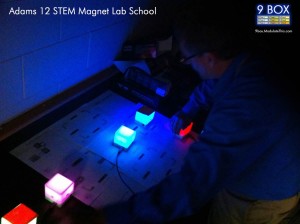
Moldover’s Octamasher inspired me to create a group casual musical instrument based on Ableton Live and AudioCubes called the†9 Box Methodfor performance, improvisation, and spontaneous tribal jams with music, sound, and light†(http://9box.modulatethis.com/) . I’m really proud that this system is in use in Denver K-8 STEM (Science Technology Engineering Match) schools and is inspiring teachers and students to learn more about music, technology, and problem-based learning. It is incredibly rewarding to give back to the next generation so I encourage your readers to volunteer in schools and in the community.
I’m also very excited that my story-driven albums are resonating with music and SciFi fans.
Any thoughts on electronic music nowadays? Tell me what you think about the direction it’s going in, and what you think that direction is.
The cost of entry is so low the flood of indie music is incredible. I love how distribution tools like soundcloud and bandcamp allow people of all levels to get their music out there. I think it’s a great time to be a musician from a creative perspective. As always the tools are just the first step. The real challenge is to learn to transcend the tools to tell your unique story.
Artist Web Site:Â http://www.MarkMosherMusic.com
Bandcamp: http://markmosher.bandcamp.com
Soundcloud: http://www.soundcloud.com/markmosher
Twitter: http://www.twitter.com/markmosher
Video: http://www.vimeo.com/markmosher
Facebook Artist Page: http://www.facebook.com/markmoshermusicModulate This!: http://www.ModulateThis.com
Patchlab: http://patchlab.modulatethis.comPercussa: http://www.percussa.us
-

